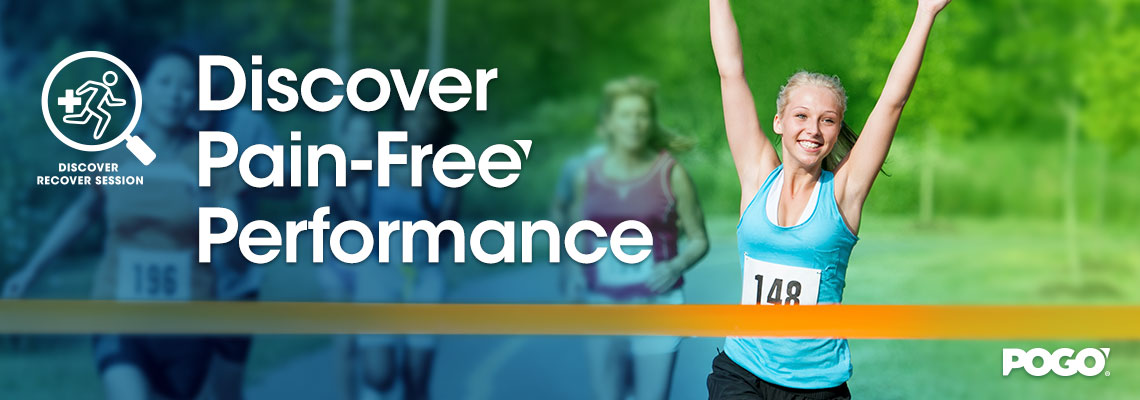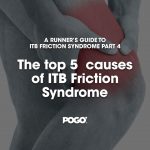Part 5-The top corrective exercises for ITB ‘Friction’ Syndrome
A runner’s guide to the rehabilitation of ITB ‘Friction’ Syndrome
In the previous blog post of this 5 part ITB syndrome series I outlined what I believed to be the 5 chief causes of ITB syndrome.
Two of these causes; running body (think ‘stiff’ and ‘weak’ body parts) and hip strength deficits, can be addressed through appropriate exercise. The others; footwear selection, running technique, and training errors, are not amenable to being addressed through the prescription of exercise alone.
With regards to addressing the running body and a deficit in hip strength as contributory factors for the onset of ITB syndrome I have consistently observed the prescription of appropriate exercises to be the gold standard way of addressing these causative factors if injury. However it is not just my 12 years of clinical experience that validates the importance of exercise to address these factors for ITB syndrome rehabilitation and prevention, Ferber, Kendall, and Farr (2011) found that correcting the hip strength deficits improves lower extremity pain in runners (1).
With the benefit of correcting weaknesses validated by Ferber et al and countless other papers in this blog post I will share with you the top 5 exercises I regularly prescribe for runners suffering from ITB syndrome.
While there exists countless exercises and progressions that can be prescribed for the treatment of ITB syndrome the below are often my ‘go to’ exercises that get results. Keep in mind that there are also many progressions that can be applied in addition to the below exercises.
*Note: Useful pre reading: If you missed Part 4-The top 5 causes of ITB syndrome click here.
My top ITB Friction Syndrome Exercises
1. Quadriceps and hip flexor stretch/ hamstring stretch.
I appreciate that I have ‘jammed’ two exercises into one but when it comes to the rehabilitation of ITB syndrome there are really only ever two stretches that I tend to prescribe to the injured runners that I consult.
The more readily prescribed stretch of these two that I prescribe is the quadriceps and hip flexors stretch which addresses anterior thigh/hip tightness. The result of this anterior hip/thigh tightness I have found to be correlated with a wide number of ITB syndrome presentations. I propose that the net effect of this anterior thigh tightness is an increased load or strain on the distal ITB due to tightness of the neighbouring vastus lateralis anteriorly, and biceps femoris posteriorly.
I do not (nor have I looked) for any substantiation to my observation of correlation in the literature however the stretch I prescribe to address this anterior thigh/hip musculature is shown below:
Hold time: hold for 1 minute and perform on the left and right sides. Be sure to ‘tuck’ you bottom under your hips to accentuate the stretch. Also be sure to not ‘lean forwards’ from the trunk-a common mistake with this stretch.
My go to biceps femoris (hamstring) stretch is shown below:
Hold time: hold for 1-3 minutes and perform on the left and right sides. Be sure to aim to keep both legs straight-one up the wall, and the one on the ground pushing down into the ground.
2. Hip external rotations
This exercise targets the deep hip external rotators (see diagram below).

A deficit of external rotation strength has been correlated with lower limb running injuries (patellofemoral pain) in the research (1). Clinically I have found that activation, strength, and endurance of the deep hip external rotators is important in the treatment and prevention of ITB syndrome.
To view the hip external rotations see below:
Aim for 100 repetitions continuously before progressing by adding resistance.
Initially aim for a controlled 100 repetitions continuously. This will be challenging but persist with it until you have mastered the 100 continuously. Do whatever it takes to get the 100 repetitions done eg if you get to 60 at first, take a quick break and try and get the next 40 repetitions done.
Progressions of the exercise can then strengthen (adding weights/resistance band), and build endurance (work towards 1 set of 100 reps vs 3-4 sets of 25 reps).
3. Ryan Gregson’s band series (glute medius)
This exercise targets the glute medius. The glute medius is a broad and fan shaped muscle which generates an exceptional amount of force given its size (4). The glute medius accounts for 60% of the glute medius cross sectional area. The glute medius is the main hip abductor.
A deficit of hip abductor strength has been well documented in the literature. Ireland, Willson, Ballantyne, and Davis (2003) revealed that females with patellofemoral pain syndrome demonstrated 26% less hip abductor and 36% less hip lateral rotation strength than controls (3).
Of all the exercises that Ryan Gregson (AUS 1500m record holder and dual Olympian) demonstrates in the below video it is the crab walks (first exercise) that I tend to commence runners rehabilitating ITB syndrome with.
View the crab walks below:
repetitions done.
My normal prescription is 2 x30 seconds to 1min initially (ie going up and down a corridor), before progressing as able to 3x 1minute, and eventually 1x 3minutes for endurance development.
This exercise can also be progressed by increasing the weight of the activation band, for example from green to blue, to black, or by shifting the band from around the ankles to around the forefoot.
The crab walks target the hip abductor muscles (gluteus medius and minimus). As with the hip external rotators a strength deficit of the hip abductors has been correlated in the scientific literature with the development of lower limb running injuries including ITB syndrome (2).
Minimising frontal plane movement at the knee (ie the thigh collapsing inwards towards the body’s midline) is a key strategy for deloading the lower limbs and reducing adverse loads on structures such as the knee and ITB.
Given the importance of hip abductor muscle strength for the treatment and prevention of ITB syndrome I also like to see runners progress beyond the Crab Walks to greater loads such as body weight loaded exercises.
Body weight exercises can best be achieved through one of my favourite running strength exercises, the side scissor kicks.
View the side scissor kicks (off elbows) below:
*Note: It is important to do this exercise at the right time of rehabilitation as doing it too early can potentially irritate the ITB. if you experience pain try less reps or perform an easier version, off the knees etc.
A progression for the side scissor kicks off the elbows can be viewed below, where the side bridge position is achieved through pushing through the hands. View the progression below:
When it comes to how many repetitions of side scissor kicks I suggest starting with 3 x12 reps, aiming to progress to 1 x50 reps over time.
An entry into this exercise can be to do it off the knees bent before progressing to bridging off the ankles.
One of the benefits of this exercise is that both hip abductor muscles groups are working, the support leg and also the leg kicking up-so it’s a ‘two for one’-which all runners love!
The exercise can be made more difficult (as if it isn’t already) by adding a small-dumbell overhead, closing the eyes, or placing the support leg on an unstable surface such as a duradisk. Another nifty progression is to try this in a TRX unit!
A variation of the side scissor kick which I will also prescribe is the side dumbbell twist. While still challenging in and of itself it can be a stepping stone to side scissor kicks.
View the side dumbell twist below:
Lastly if the above glute medius exercises are too demanding or challenging a good exercise for neuromuscular activation of the glute medius is the wall push. View the wall push below:
4. Adduction exercises
a. Ball squeezes
The ball squeeze is a great exercise for recruiting (facilitating neuromuscular activation) the adductor musculature performed in an isometric fashion. It is one of those exercises that you never really feel like you master-for the simple reason there always feels like the ability exists to squeeze harder for longer!
This exercise needs to be completed in both the knee bent position in supine and also the straight leg position (longer lever arm so technically this variation should be more challenging).
I suggest starting with 2 x30 second holds for both the bent and straight leg positions.
Note: Care should be taken to ensure that the feet are not lifted off the ground when performing the straight leg version of the exercise as this may irritate the lower back by putting it into a position of hyperextension.
To view the ball squeezes see below:
b. Chair bridges
The adductor chair bridges is an advanced exercise for strengthening the adductor muscle group. Note it can often feel disconcerting in the groin area when you first start doing this exercise. Care should be taken to not over do it initially. I suggest small hold times to begin with eg 15 seconds (which will still feel like a long time!). From 15 second holds you can build towards 30s holds, and eventually 1minute holds.
You can increase or decrease the load through the adductors depending on how much foot/leg you place on the chair. The less leg is on the chair the greater the loading of the adductors.
Note: An introductory version of this exercise can also be performed whereby the top leg bridges off a bent knee as opposed to straight leg. See below:
5. Sit to stands
Sit to stands are one of my favourite exercises to strengthen the glute max musculature.
The glute max is the largest muscle of the hip accounting for 16% of the total cross sectional area (4). Interestingly 80% of the glute max inserts into the iliotibial band, with the remaining 20% inserting into the gluteal tuberosity of the femur (4). The glute max is a powerful hip extensor and also lateral rotator of the hip, meaning that it helps control the ability of a runner to run ‘tall’ and also help control the degree of hip internal rotation throughout the stance phase.
The glutes work very hard during running. In fact they are required to manage around four times body weight during the impact phase of running.
The glute max is an essential muscle group to target in the rehabilitation and prevention of ITB syndrome.
View the sit to stands with hands in front view here.
This is a good way to begin this exercise. The benefit of having the hands out in front of the body is that you can use the momentum of the arms to facilitate the standing motion.
Another alternative is to commence the exercise by standing up on two legs, then sitting on a single leg. The alternative can also be a good entry level exercise: standing on a single leg and sitting down on two legs.
Sit to stands with overhead dumbbells:
Sit to stand variation with hands behind the back:
In a study of patients that had undergone anterior cruciate ligament reconstructions those that could do at least 22 single leg sit to stands had better knee-related quality of life at 1 and 3 years postoperatively than those that couldn’t do 22 reps (5). Although this information is directed at ACL patients, the ability to perform single leg sit to stands can improve physical performance in all aspects of life for everyone in particular runners.
Take Home
While there are as previously outlined scores of exercises that could be prescribed for ITB syndrome these are some of the more regular exercises that I prescribe to runners suffering from ITB syndrome for effective rehabilitation.
Any questions let me know. #runpainfree
If you know a runner who can benefit from this article please forward it and spread the #runoainfree message.
Physio With a Finish Line™,

Brad Beer (APAM)
Physiotherapist (APAM)
Author ‘You CAN Run Pain Free!’
Founder POGO Physio
Host The Physical Performance Show
Featured in the Top 50 Physical Therapy Blog
References
-
Ferber R, Kendall K, Farr L 2011 Changes in knee biomechanics after a hip-abductor strengthening protocol for runners with patellofemoral pain syndrome. Journal of Athletic Training 46: 142–149
-
Davis, I et al (2003). Hip strength in females with and without patellofemoral pain. Journal of Orthopaedic & Sports Physical Therapy, 2003 Volume:33 Issue:11 Pages:671–676 DOI:10.2519/jospt.2003.33.11.671
- Ireland ML, Willson JD, Ballantyne BT, Davis IM 2003 Hip strength in females with and without patellofemoral pain. Journal of Orthopaedic and Sports Physical Therapy 33: 671–676.
- Reiman, Michael P., Lori A. Bolgla, and Janice K. Loudon. “A literature review of studies evaluating gluteus maximus and gluteus medius activation during rehabilitation exercises.” Physiotherapy theory and practice 28.4 (2012): 257-268.
- Culvenor, A. G., Collins, N. J., Guermazi, A., Cook, J. L., Vicenzino, B., Whitehead, T. S., Morris, H. G. and Crossley, K. M. (2016), Early Patellofemoral Osteoarthritis Features One Year After Anterior Cruciate Ligament Reconstruction: Symptoms and Quality of Life at Three Years. Arthritis Care & Research, 68: 784–792. doi:10.1002/acr.22761









These exercises are very helpful also for problems with ITT post-total knee replacement. After all the initial rehab, one goes back to work, exercises decrease and suddenly quads etc waste away and lateral knee pain +++ starts (also ankle). These exercises focus on the very muscles that went on vacation post-surgery and enabled me to start walking better (at 4 months post reconstruction).
Glad it helps Tim.
Regards Brad Beer